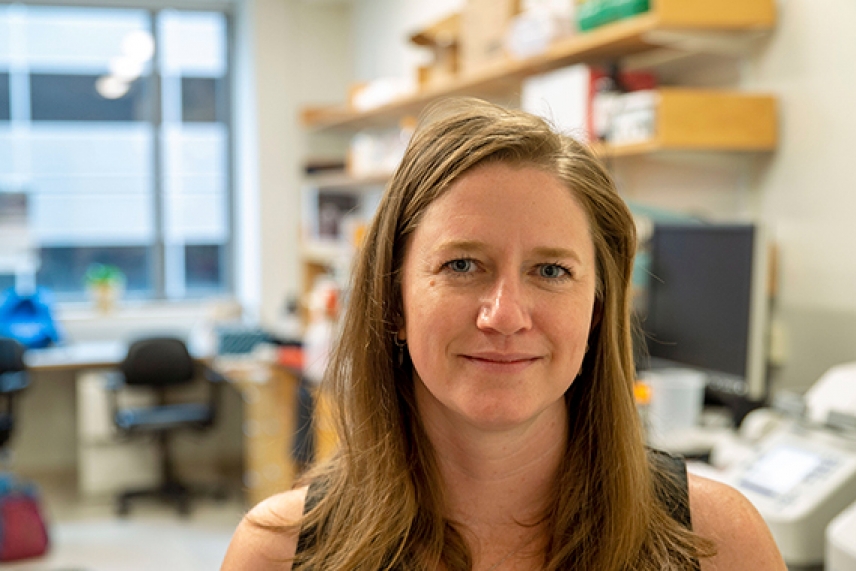
Heather Keys
Conor Gearin/Whitehead Institute
Heather Keys: Functional Genomics Platform
The gene editing system CRISPR-Cas9 is transforming the way biology works. One of the most exciting uses goes far beyond modifying a single stretch of DNA — instead screening the entire genome for genes that play a role in a particular phenotype or a disease. At Whitehead Institute, Heather Keys manages the Functional Genomics Platform, which aids scientists in making use of this new tool and adapting CRISPR screens to new research settings.
“CRISPR screens are the new big thing,” Keys says. “It opens up a lot of doors for different types of science.”
Keys joined the platform in 2016, not long after it was created. She was completing her PhD in Whitehead Institute Member David Sabatini’s lab and was planning to enter industry, but the chance to help develop a platform centered around CRISPR screens was too good to pass up.
Keys explains that the simplest type of CRISPR screen involves taking a large collection of cells and knocking out a single gene in each one using a library of guide RNAs that tell the Cas9 enzyme where to cut. Using multiple guide RNAs for the same gene helps mitigate any off-target effects that an individual guide RNA may produce. The cells are maintained for several weeks or even months, passaged many times to new culture media in order to see which cell populations thrive and which dwindle away. At various stages during this process, Keys and her team may handle more than a billion cells when screening the full human genome. The number of cells in each cell population that had a particular gene targeted tells the researchers which genes were necessary for cell growth and survival.
Now that the Functional Genomics Platform has become adept at this straightforward assay, Keys is helping researchers adapt CRISPR screens to new types of questions. For example, rather than seeing which genes are needed for cells to grow, the platform can test for genes that sensitize cancer cells to chemotherapy treatments. Genes can be up- or down-regulated rather than knocked out. Keys is also working with Whitehead Institute Fellow Kristin Knouse to create a CRISPR screen that could be used in the livers of live mice. “Hopefully that will be coming soon, and hopefully we’ll be able to make that more accessible to other people,” she says.
Keys encourages scientists to get in touch if they ever think a CRISPR screen might help them with a research question. “We’re very busy, but we’re always able to put someone in the queue,” she says. “We’re always happy to chat and talk about whether a screen would be right for their question.”
Adapting CRISPR screens to new contexts is a rewarding challenge, Keys says. “The environment is so creative here — I never know who’s going to email me next and say, hey, I want to screen this phenotype,” she says. “You’re always surprised by what’s coming down the pipeline next, and it’s really cool to be a part of that. Everybody does such high-quality work, everybody has such interesting ideas.”
In her free time, Keys likes to hang out on her boat. She lives in Quincy, and her boyfriend has been a boater for many years. The motorboat takes a lot of work and maintenance. “Now that things are going well with it, we’re trying to enjoy it and get out as much as we can,” she says. The vessel lets them reach the less accessible Boston harbor islands, as well as further destinations like Gloucester and Portsmouth. “But sometimes it’s just about hanging out at the marina — the boating life,” she says.
Contact
Communications and Public Affairs
Phone: 617-452-4630
Email: newsroom@wi.mit.edu


